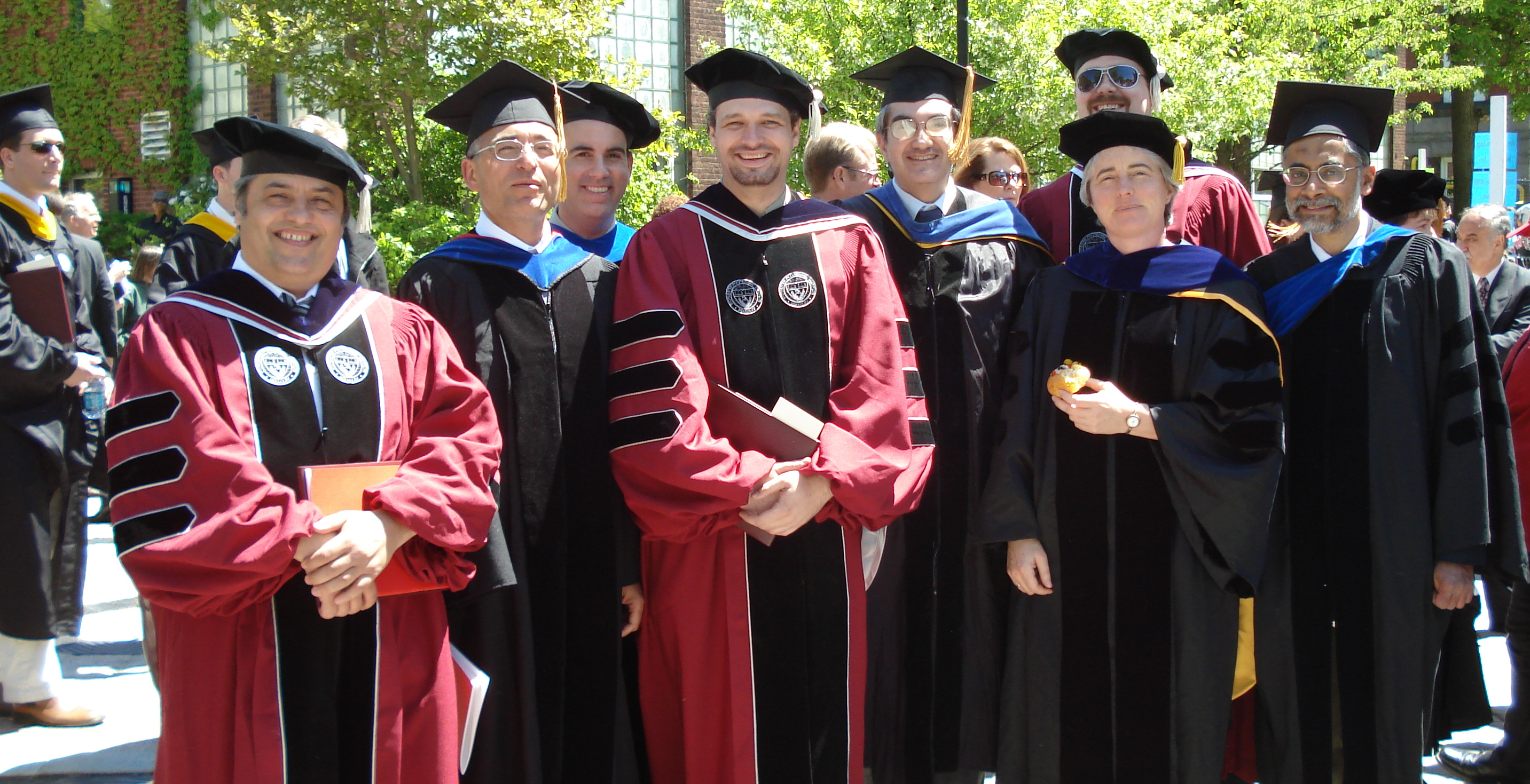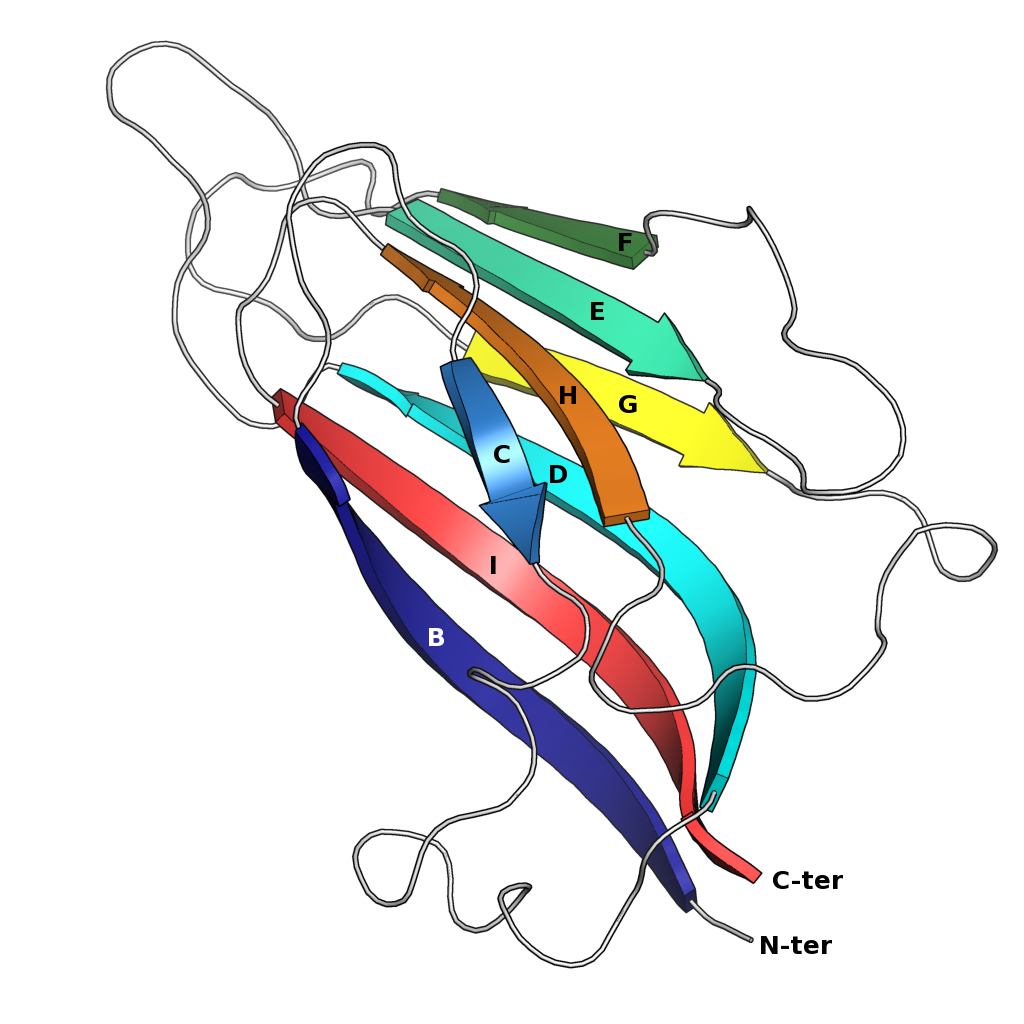|
Alpha-ketoglutarate-dependent Hydroxylases
Alpha-ketoglutarate-dependent hydroxylases are a major class of non-heme iron proteins that catalyse a wide range of reactions. These reactions include hydroxylation reactions, demethylations, ring expansions, ring closures, and desaturations. Functionally, the αKG-dependent hydroxylases are comparable to cytochrome P450 enzymes. Both use O2 and reducing equivalents as cosubstrates and both generate water. Biological function αKG-dependent hydroxylases have diverse roles. In microorganisms such as bacteria, αKG-dependent dioxygenases are involved in many biosynthetic and metabolic pathways; for example, in Escherichia coli , ''E. coli'', the AlkB enzyme is associated with the repair of damaged DNA. In plants, αKG-dependent dioxygenases are involved in diverse reactions in plant metabolism. These include flavonoid biosynthesis, and ethylene biosyntheses. In mammals and humans, αKG-dependent dioxygenase have functional roles in biosyntheses (e.g. collagen biosynthesis and L-car ... [...More Info...] [...Related Items...] OR: [Wikipedia] [Google] [Baidu] |
Non-heme Iron Protein
In biochemistry, non-heme iron proteins describe families of enzymes that utilize iron at the active site but lack heme cofactors. Iron-sulfur proteins, including those that are enzymes, are not included in this definition. Some non-heme iron proteins contain one Fe at their active sites, others have pairs of Fe centers: *Many mono-Fe proteins are alpha-ketoglutarate-dependent hydroxylases. Major examples are the lipoxygenases, isopenicillin N synthase, protocatechuate 3,4-dioxygenase, deacetoxycephalosporin-C synthase, and aromatic amino acid hydroxylases. *Major diiron enzymes include hemerythrin, some ribonucleotide reductases, some methane monooxygenases, purple acid phosphatases, and ferritin. : See also * Iron-binding proteins References [...More Info...] [...Related Items...] OR: [Wikipedia] [Google] [Baidu] |
Cysteine Dioxygenase
Cysteine dioxygenase (CDO) is a non-heme iron enzyme that catalyzes the conversion of L-cysteine to cysteine sulfinic acid (cysteine sulfinate). CDO plays an important role in cysteine catabolism, regulating intracellular levels of cysteine and responding changes in cysteine availability. As such, CDO is highly regulated and undergoes large changes in concentration and efficiency. It oxidizes cysteine to the corresponding sulfinic acid by activation of dioxygen, although the exact mechanism of the reaction is still unclear. In addition to being found in mammals, CDO also exists in some yeast and bacteria, although the exact function is still unknown. CDO has been implicated in various Neurodegeneration, neurodegenerative diseases and cancers, which is likely related to cysteine toxicity. Function CDO is responsible for the first major step in metabolism of cysteine. CDO oxidizes to cysteine sulfinic acid (which exists predominantly in the anionic sulfinate form ''in vivo''). Over ... [...More Info...] [...Related Items...] OR: [Wikipedia] [Google] [Baidu] |
2OG Oxygenase Inhibitors
Og ( ; ; ) was, according to the Hebrew Bible and other sources, an Amorites, Amorite king of Bashan who was slain along with his army by Moses and his men at the battle of Daraa, Edrei. In Arabic literature he is referred to as ʿŪj ibn ʿAnāq (, "Og son of ʿAnāq (daughter of Adam), Anaq," Anaq being a daughter of Adam in Islamic tradition). Og is introduced in the Book of Numbers. Like his neighbor Sihon of Heshbon, whom Moses had previously conquered at the battle of Jahaz, he was an Amorite king, the ruler of Bashan, which contained sixty walled cities and many unwalled towns, with his capital at Ashteroth Karnaim, Ashtaroth (probably modern Tell Ashtara, where there still exists a mound). The Book of Numbers, Chapter 21, and Deuteronomy, Chapter 3, continues: Next we turned and headed for the land of Bashan, where King Og and his entire army attacked us at Edrei. But the Lord told me, "Do not be afraid of him, for I have given you victory over Og and his entire army, ... [...More Info...] [...Related Items...] OR: [Wikipedia] [Google] [Baidu] |
Gamma-butyrobetaine Dioxygenase
Gamma-butyrobetaine dioxygenase (also known as BBOX, GBBH or γ-butyrobetaine hydroxylase) is an enzyme that in humans is encoded by the ''BBOX1'' gene. Gamma-butyrobetaine dioxygenase catalyses the formation of L-carnitine from gamma-butyrobetaine, the last step in the L-carnitine biosynthesis pathway. Carnitine is essential for the transport of activated fatty acids across the mitochondrial membrane during mitochondrial beta oxidation. In humans, gamma-butyrobetaine dioxygenase can be found in the kidney (high), liver (moderate), and brain (very low). ''BBOX1'' has recently been identified as a potential cancer gene based on a large-scale microarray data analysis. Reaction Gamma-butyrobetaine dioxygenase belongs to the 2-oxoglutarate (2OG)-dependent dioxygenases, 2-oxoglutarate (2OG)-dependent dioxygenase superfamily. It catalyses the following reaction: :4-trimethylammoniobutanoate (γ-butyrobetaine) + 2-oxoglutarate + O2 \rightleftharpoons 3-hydroxy-4-trimethylammoniobutanoat ... [...More Info...] [...Related Items...] OR: [Wikipedia] [Google] [Baidu] |
Mildronate
Meldonium (INN; trade name Mildronate, among others) is a pharmaceutical developed in 1970 by Ivars Kalviņš at the USSR Latvia Institute of Organic Synthesis. It is now manufactured by the Latvian pharmaceutical company Grindeks and various generic producers. Primarily distributed in Eastern Europe, meldonium is used as an anti-ischemia medication. Meldonium is prescribed for cardiovascular, neurological, and metabolic conditions due to its anti-ischaemic and cardioprotective effects, achieved by inhibiting β-oxidation and activating glycolysis. Athletes have used meldonium to enhance recovery and (controversially) performance, though these claims lack robust scientific support. Since 1 January 2016, meldonium has been listed as a banned substance by the World Anti-Doping Agency (WADA). It functions as a metabolic modulator, altering enzymatic reactions in the body. While some athletes, including Maria Sharapova, used meldonium before its ban, its effectiveness as a per ... [...More Info...] [...Related Items...] OR: [Wikipedia] [Google] [Baidu] |
N-Oxalylglycine
''N''-Oxalylglycine is the organic compound with the formula HO2CC(O)NHCH2CO2H. This colourless solid is used as an inhibitor of α-ketoglutarate-dependent enzymes.Hausinger, R. P."Fe(II)/α-ketoglutarate-dependent hydroxylases and related enzymes" Critical Reviews of Biochemical Molecular Biology 2004, 39: pp 21-68. It is isosteric with α-Ketoglutaric acid α-Ketoglutaric acid is an organic compound with the formula ). A white, nontoxic solid, it is a common dicarboxylic acid. Relevant to its biological roles, it exists in water as its conjugate base α-ketoglutarate. It is also classified as a .... Such enzymes are pervasive and, for example, are required for the synthesis of 4-hydroxyproline. References {{DEFAULTSORT:Oxalylglycine, N- Carboxamides Dicarboxylic acids ... [...More Info...] [...Related Items...] OR: [Wikipedia] [Google] [Baidu] |
PHD2 Iron Binding Site
A Doctor of Philosophy (PhD, DPhil; or ) is a terminal degree that usually denotes the highest level of academic achievement in a given discipline and is awarded following a course of graduate study and original research. The name of the degree is most often abbreviated PhD (or, at times, as Ph.D. in North America), pronounced as three separate letters ( ). The University of Oxford uses the alternative abbreviation "DPhil". PhDs are awarded for programs across the whole breadth of academic fields. Since it is an earned research degree, those studying for a PhD are required to produce original research that expands the boundaries of knowledge, normally in the form of a dissertation, and, in some cases, defend their work before a panel of other experts in the field. In many fields, the completion of a PhD is typically required for employment as a university professor, researcher, or scientist. Definition In the context of the Doctor of Philosophy and other similarly titled ... [...More Info...] [...Related Items...] OR: [Wikipedia] [Google] [Baidu] |
Isopenicillin N Synthase
Isopenicillin N synthase (IPNS) is a non-heme iron protein belonging to the 2-oxoglutarate (2OG)-dependent dioxygenases oxidoreductase family. This enzyme catalyzes the formation of isopenicillin N from δ-(L-α-aminoadipoyl)-L-cysteinyl-D-valine (LLD-ACV). :''N''- 5''S'')-5-amino-5-carboxypentanoylL-cysteinyl-D-valine + O2 \rightleftharpoons isopenicillin N + 2 H2O This reaction is a key step in the biosynthesis of penicillin and cephalosporin antibiotics. The active sites of most isopenicillin N synthases contain an iron ion. This enzyme is also called isopenicillin N synthetase. Mechanism A Fe(II) metal ion in the active site of the enzyme is coordinated by at least two histidine residues, an aspartate residue, a glutamine residue, and two water molecules in the absence of a bound substrate. Just two histidine residues and one aspartic acid residue are entirely conserved. Therefore, it is highly significant that these two histidine residues, His214 and His270, and one ... [...More Info...] [...Related Items...] OR: [Wikipedia] [Google] [Baidu] |
Carmen Domene
Carmen Domene is a Spanish academic who is a professor of chemistry at the University of Bath. Her research makes use of computational simulations to understand biological systems and processes. She was awarded the 2020 International Society of Quantum Biology and Pharmacology Loew Award and the 2023 Royal Society of Chemistry Corday-Morgan Prize. Early life and education Domene is from Spain. She was an undergraduate at the University of Seville. Domene was a graduate student at the University of Exeter, where she worked on many body effects in interionic interactions with Patrick Fowler. She was awarded a Royal Society University Research Fellowship and moved to the University of Oxford. She then moved to the University of Pennsylvania. She also worked with Michele Parrinello at ETH Zurich. Research and career In 2012, Domene joined King's College London as a Reader in Chemistry. In 2017, she moved to the University of Bath. Her research makes use of molecular modellin ... [...More Info...] [...Related Items...] OR: [Wikipedia] [Google] [Baidu] |
EGLN1
Hypoxia-inducible factor prolyl hydroxylase 2 (HIF-PH2), or prolyl hydroxylase domain-containing protein 2 (PHD2), is an enzyme encoded by the ''EGLN1'' gene. It is also known as Egl nine homolog 1. PHD2 is a α-ketoglutarate/2-oxoglutarate-dependent hydroxylase, a superfamily non-haem iron-containing proteins. In humans, PHD2 is one of the three isoforms of hypoxia-inducible factor-proline dioxygenase, which is also known as HIF prolyl-hydroxylase. The hypoxia response HIF-1α is a ubiquitous, constitutively synthesized transcription factor responsible for upregulating the expression of genes involved in the cellular response to hypoxia. These gene products may include proteins such as glycolytic enzymes and angiogenic growth factors. In normoxia, HIF alpha subunits are marked for the ubiquitin-proteasome degradation pathway through hydroxylation of proline-564 and proline-402 by PHD2. Prolyl hydroxylation is critical for promoting pVHL binding to HIF, which targets HIF ... [...More Info...] [...Related Items...] OR: [Wikipedia] [Google] [Baidu] |
Double-stranded β-helix
The jelly roll or Swiss roll fold is a protein fold or supersecondary structure composed of eight beta strands arranged in two four-stranded sheets. The name of the structure was introduced by Jane S. Richardson in 1981, reflecting its resemblance to the jelly or Swiss roll cake. The fold is an elaboration on the Greek key motif and is sometimes considered a form of beta barrel. It is very common in viral proteins, particularly viral capsid proteins. Taken together, the jelly roll and Greek key structures comprise around 30% of the all-beta proteins annotated in the Structural Classification of Proteins (SCOP) database. Structure The basic jelly roll structure consists of eight beta strands arranged in two four-stranded antiparallel beta sheets which pack together across a hydrophobic interface here citation... uniprot The strands are traditionally labeled B through I for the historical reason that the first solved structure, of a jelly roll capsid protein from the tomato bush ... [...More Info...] [...Related Items...] OR: [Wikipedia] [Google] [Baidu] |
Christopher J
Christopher is the English version of a Europe-wide name derived from the Greek name Χριστόφορος (''Christophoros'' or '' Christoforos''). The constituent parts are Χριστός (''Christós''), "Christ" or "Anointed", and φέρειν (''phérein''), "to bear"; hence the "Christ-bearer". As a given name, 'Christopher' has been in use since the 10th century. In English, Christopher may be abbreviated as " Chris", "Topher", and sometimes " Kit". It was frequently the most popular male first name in the United Kingdom, having been in the top twenty in England and Wales from the 1940s until 1995, although it has since dropped out of the top 100. Within the United Kingdom, the name is most common in England and not so common in Wales, Scotland, or Northern Ireland. Cognates in other languages *Afrikaans: Christoffel, Christoforus * Albanian: Kristofer, Kristofor, Kristoforid, Kristo *Arabic: كريستوفر (''Krīstafor, Kristūfar, Krístufer''), اصطفر (''ʔ ... [...More Info...] [...Related Items...] OR: [Wikipedia] [Google] [Baidu] |






